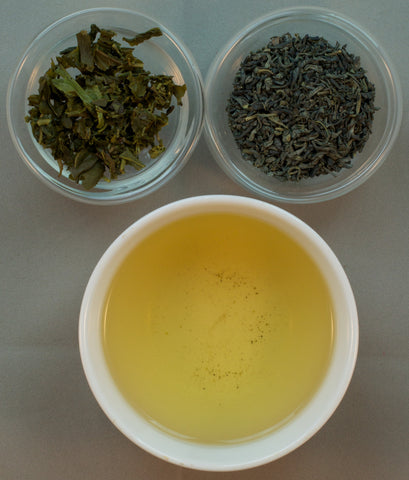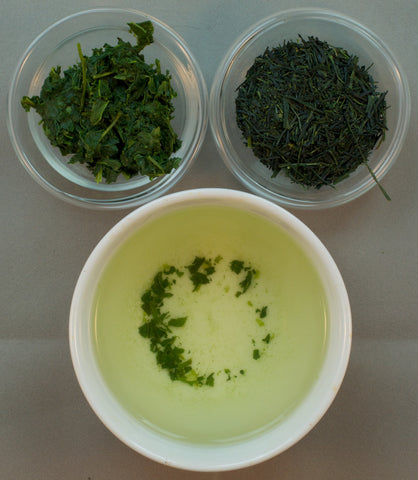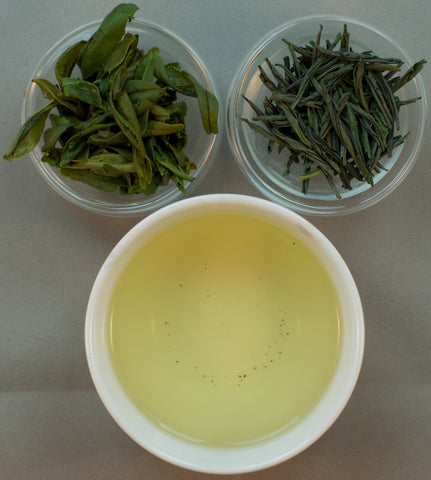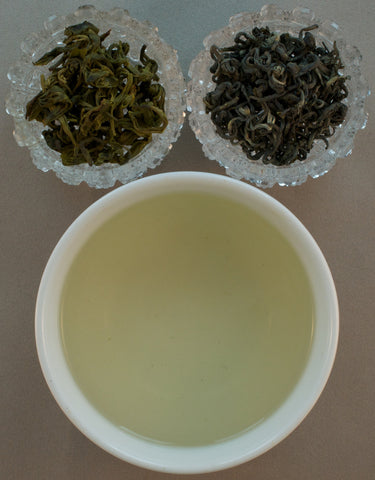Tai Ping Hou Kui, also known by it's nickname "Monkey King," is one of the most unique teas in China. A relative newcomer in a country whose tea culture goes back centuries and millennia, the tea in its present form was developed in the early 20th century. But it is still considered one of China's Ten Famous Teas.
Like the Chinese epic novel, the Journey to the West, I feel like my journey towards carrying Tai Ping Hou Kui has been long and arduous. This is one of my favorite teas for a myriad of reasons. While I had a source I trusted for my own personal enjoyment, I hadn't found a source with appropriate provenance to retail on the site until now.
Try it "Grand-parent" style!
Provenance:
-
Origin: Hougang Village, Taiping Hu Zhen, Yellow Mountain City, Anhui Province, China
-
Grower/Teamaster: Wang Shuangxi
-
Elevation: 300m/1000ft
-
Harvest Date: Late April 2022
-
Cultivar: Shi Da Cha 柿大茶 (Persimmon Large Leaf)
-
Cultivation: Natural (No chemical fertilizer, pesticide, or herbicide)
-
Plucking Standard: One bud with three leaves are plucked, then the oldest leaf removed for one bud and two leaves
-
Processing Notes: Completely handmade in a labor-intensive process that creates its unique very large flattened leaf shape
-
Nickname: Tai Ping Monkey King (太平猴魁)
-
History/Pedigree: Developed in the early 20th century
Brewing Suggestions1:
-
Water: 170-180˚F
-
Tea: 2g per 4oz of water (20-25 leafsets2)
-
Steep: 2-3 minutes with at least 4 infusions, starting to increase the steep time of the 3rd and subsequent infusions, or
-
Grandparent style: I just drink it like the elders do, simply drinking it after the leaves have infused for two minutes and pouring more water in each time my glass is down to about a quarter of the original amount of water. Preferably in a nice clear glass like these!
Tasting Notes:
- brilliant green infusion; its aroma blends notes of cornsilk, orchid, and fresh grains with the scent of bamboo groves.
Detailed processing notes:
-
As they come in from the fields the oldest leaf of each leaf/budset is removed, leaving a bud and two leaves. The leaves rest and wither during this process as the await further processing.
-
During the “kill green” step (sha qing 杀青 or 殺青), small batches of the fresh leaves are fried at 110°C in an iron metal wok, constantly moving the leaves in the wok for about three minutes at a time. This kills the enzymes that cause the leaves to further oxidize and keeps the color a fresh green.
-
To facilitate shaping the leaves, the temperature of the wok and fry the leaves is lowered for a couple more minutes and a skilled hand motion is used to squeeze the softened buds and leaves together.
-
The tea is now roasted for an hour in a wooden four-drawer oven using a charcoal pot at the bottom as a heat source. Each level of the cabinet is maintained at a different temperature: the lowest level at 100°C, then each subsequent higher level 10°C lower, with the fourth and final at 70°C. The tea is moved from bottom to top, gradually removing their moisture at each different levels of heat.
-
No each leafset is laid flat between two layers of fine steel mesh screens and rolled to their famously unique shape.
-
The leaves are then allowed to cool down for a few hours before being roasted one final time to reduce their moisture content to a shelf stable level.
-
The finished Tai Ping Houkui is then wrapped in cloth or paper and placed in a big ceramic pot. The ceramic pot uses powdered limestone at its bottom to absorb moisture. The limestone is covered with a wooden plank padded with large bamboo leaves. This short rest in this traditional storage is the final and most subtle step in Tai Ping Houkui’s production, imparting the tea with the gentle aroma of bamboo.
1 Brewing suggestions are just that. Try it the suggested way then experiment. In this case I suggest first experimenting with the quantity of tea per oz of water, then temperature. Timing and number of steeping can also be adjusted to personal taste. Some tea drinkers like to use slightly hotter and longer times for each subsequent steeping.
2 Weighing your tea is always the best way to control your dosage. I provide approximate volume measures for convenience but they can be problematic due to the variance in tea leaf shape and size.



